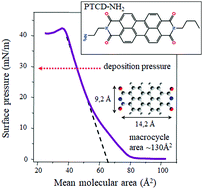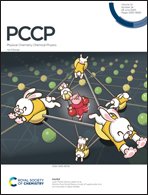Supramolecular architecture and electrical conductivity in organic semiconducting thin films†
Abstract
Organic thin films are an essential component of the structure of optical and electronic devices. However, the optical and electrical properties of these films depend on their supramolecular architecture, which may vary according to the techniques used to manufacture them. Here, the correlation between conductivity and supramolecular architecture was investigated. The supramolecular architecture was analyzed in terms of the molecular organization and J- or H-aggregation established during the fabrication of perylene tetracarboxylic diimide (PTCD) nanometric films. Three deposition techniques, Langmuir–Schaefer (LS), Langmuir–Blodgett (LB), and Physical Vapor Deposition (PVD), were evaluated. The UV-vis absorption spectra indicated that LS, LB, and PVD films grow homogeneously. Also, the presence of J and H aggregates was observed for all films, the H aggregates prevailing for the LB film. The FTIR measurements suggested that the molecular organization is similar for LS and LB films, with a tendency to form head-on organization onto a solid substrate. For the PVD film, the perylene macrocycles are inclined approximately 45° relative to the substrate. AFM measurements indicated a homogenous surface for all films. In terms of electrical conductivity, the highest conductivity was found for LS, followed by LB and PVD. The conductivity values were interpreted in terms of molecular organization and J- or H-aggregate formation.



 Please wait while we load your content...
Please wait while we load your content...